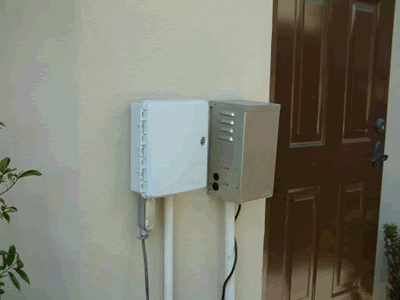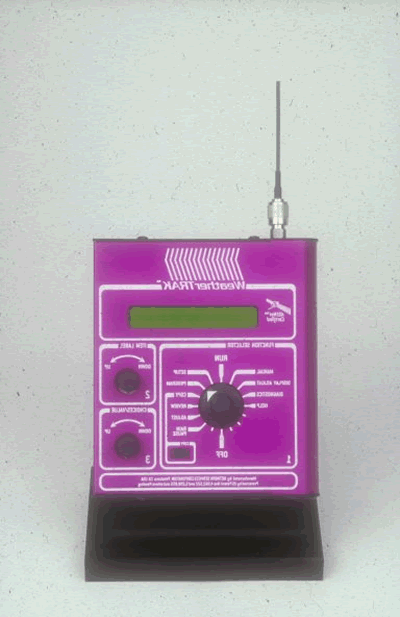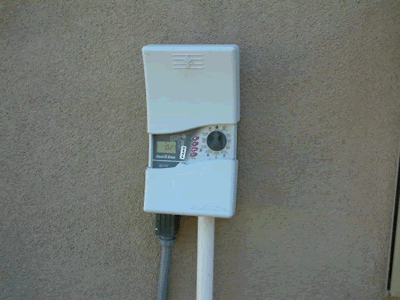Tips for Selecting an Irrigation Controller
| 1. | Type of controller |



| • | Electro-mechanical controllers are probably the easiest to program and have a higher tolerance for electrical surges. The drawbacks are that they are not very accurate, not as flexible with programming, and usually cost more. |
| • | Digital controllers usually just have a display and a keypad on the faceplate. These can be a little intimidating but are very accurate and flexible. |
| • | Hybrid controllers have a dial that you point to the different functions and several buttons for adjustment purposes. These combine the ease of programming of the electro-mechanical style with the accuracy and flexibility of the digital types. |
| 2. | Maximum station run times |
Since drip emitters run at a flow rate of 2 gallons per hour or less, you want a controller that can run stations for at least two hours. Some controllers will have longer run time capabilities which is useful when considering schedules for tree zones. In the future, when the landscape is mature, you will want to run tree zones for up to six hours.
| 3. | Number of programs |
This depends on the flexibility you need for your own system. Different programs on a controller let you run stations on different schedules. It’s like having several controllers in one box. If you have flowerpots that will need to be watered every day and a shrub zone that needs to be watered every third day, you will need at least two programs on your controller. If you add a tree zone that you want to water every fourteen days, you will need a third program. Remember that the more programs a controller has, the greater the cost but the more flexibility you have in controlling your landscape watering.
| 4. | Schedule length |
This defines the maximum number of days that you can skip between irrigation. The timer you get should be able to go at least 14 days between waterings. Even if all you are watering is grass, a winter lawn only needs to be watered every 10 to 14 days during the coldest part of the season. With the desert adapted plants commonly used in our landscapes, a timer that can go 28 to 30 days in between waterings is best.
| 5. | Start times |
Since drip is a slow application and run-off usually isn’t a problem, having multiple start times isn’t always critical. One start time is usually all you will use. With most multiple program controllers, you normally get three possible cycle starts per program, should you need them. This becomes important if you have an area that is prone to runoff. You can break your total irrigation time for that area into smaller segments of time to allow for more infiltration.
| 6. | Water budgeting |
Many controllers now offer this feature that will allow you to change all the station run times by a percentage with one adjustment. This makes minor adjustments much easier. It is not recommended that this be used for year-round adjustments as it will cause shallow, frequent watering during the winter season.
| 7. | Sensor inputs |
Some models will allow you to wire a rain shut-off device directly to the controller rather than interrupting the common wire to the control valves. Both ways work equally well, however, if you need to diagnose a problem the shutoff device is easier to bypass when it is at the controller. Also, some models will alert you on the display if the sensor is interrupting a normal cycle.
| 8. | Indoor/outdoor mount |
Indoor mount controllers are typically less expensive and easier to install. The power supply is usually a transformer that plugs into a wall outlet. If other people need access to the controller, such as friends monitoring the system while you’re away or a landscape maintenance contractor, you will want to use an outdoor mount type.
Jeff Lee
Water Conservation Specialist
City of Mesa